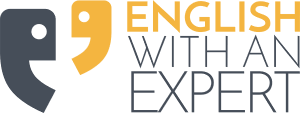English With an expert
IELTS Speaking – What’s the Test About?

What’s IELTS Speaking All About
Do you know the average score for a native speaker taking the IELTS Speaking test?
Unlike TOEFL or PTE the IELTS Speaking test takes place face-to-face with an examiner. An in-person conversation makes the test more natural, but also more nerve-wracking.
Cambridge designed the test to mimic the kind of conversation you might have with a friend – albeit a very unusual friend. In fact, you cannot ask any of your own questions – with one little-known exception.
How Long Does the IELTS Speaking test take?
The test has 3 parts and takes between 11 and 14 minutes to complete. During the test, there are ways to reduce or increase your speaking time.
Each section gets harder and tests a different skillset.
IELTS Speaking Part 1
Part 1 takes 4-5 minutes, during which time the examiner asks you about your life and other everyday topics.
The time begins when the examiner says, “Good afternoon”. He will ask you to confirm your name and show your identification.
Following these formalities, he will ask you about 3 different topics. Each topic has four questions. When the test starts, you can steer the examiner in what they ask. You can also adapt later questions when you have no experience of the topic.
My video course helps you to know what to do when you have no experience of the topic you are asked. It also explains how to deal with the follow-up question and keep the examiner happy
IELTS Speaking Part 2
Part 2, also known as the long turn, lasts for between 3-4 minutes.
The examiner gives you a piece of paper, a pencil, and a question. You get one minute to think about your answer – and 2 minutes speaking time.
You can’t predict what question you will get, but every question asks you to describe and explain.
IELTS Speaking Part 3
Part 3 continues the topic from Part 2 and takes 4-5 minutes.
In part 3 the examiner can go off-script and follow up your answers with his own questions.
The assessment tests your performance over the whole test, but Part 3 might make the difference between Band 6.5 and 7.0.
Part 3 questions are abstract and general – not about yourself. The examiner will ask you to assess, suggest, explain and use a range of language skills. You should consider which type of language the examiner wants you to use each time.
My video course contains some proven techniques for knowing how you should answer each question and what grammar you should use.



